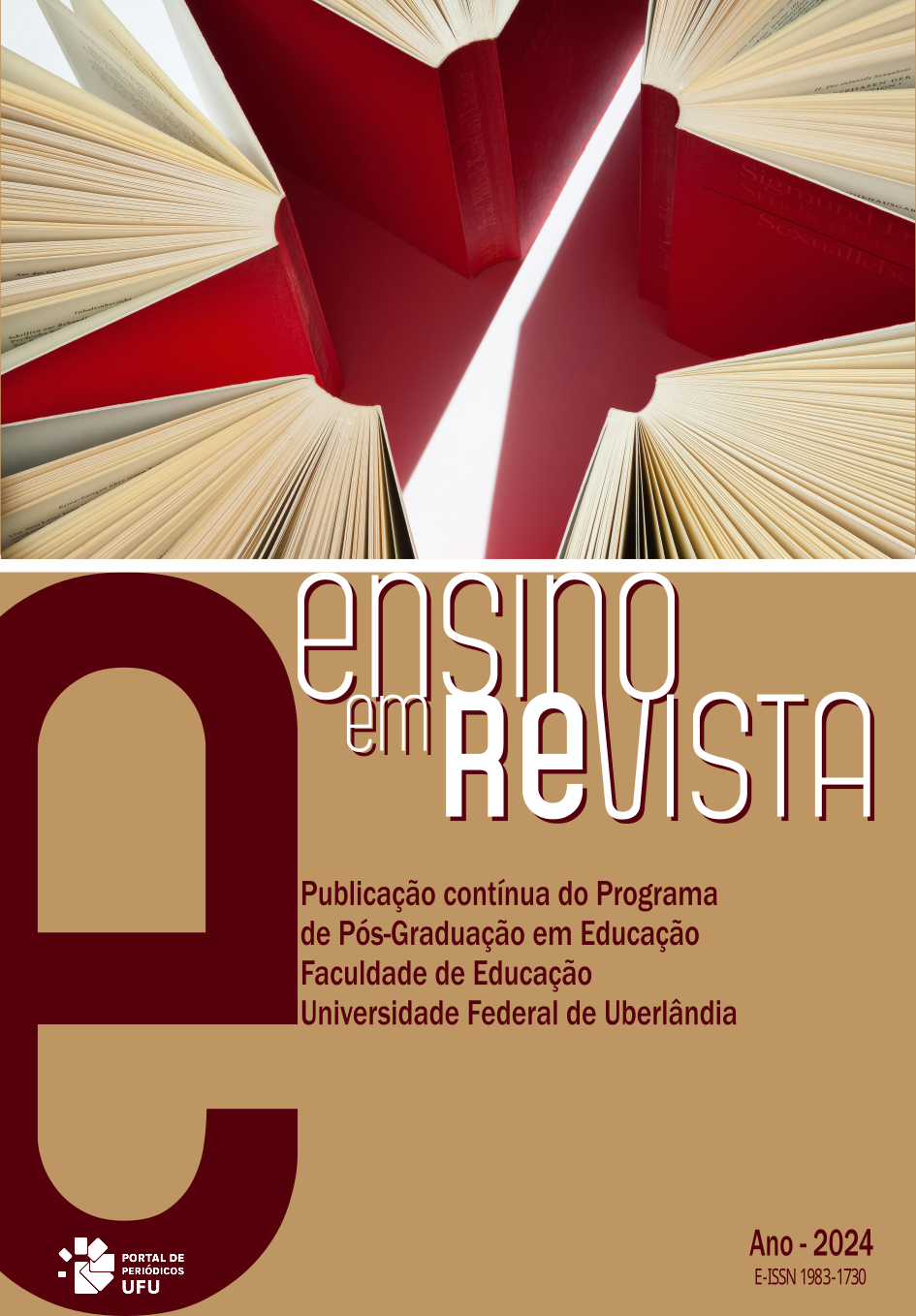Letramento estatístico segundo o GAISE e a BNCC: paridades e contrastes
Conteúdo do artigo principal
Resumo
O século XXI evidenciou o potencial da estatística para a sociedade, determinando que o letramento estatístico deve ter seu início na fase escolar. No Brasil, a Base Nacional Comum Curricular (BNCC) reflete uma mudança de perspectiva no ensino de estatística incluindo Probabilidade e Estatística como uma unidade temática de Matemática no Ensino Fundamental. Este estudo visa a contribuir para a discussão sobre a educação estatística, investigando em que medida as habilidades de Estatística e Probabilidade da BNCC para os seis primeiros anos do Ensino Fundamental têm potencial para desenvolver o letramento estatístico. Para provocar e conduzir a reflexão, desenvolvemos uma análise documental fundada na leitura combinada que relaciona as habilidades da unidade temática Probabilidade e Estatística da BNCC do primeiro ao sexto ano escolar com as habilidades características da etapa inicial do desenvolvimento do letramento estatístico segundo o Guidelines for Assessment and Instruction in Statistics Education (GAISE). Em particular, destacam-se como reflexões emergentes da análise que a BNCC tem potencial para desenvolver o letramento estatístico nos anos iniciais do Ensino Fundamental a partir da proposição de investigações e que as habilidades de probabilidade na BNCC revelam uma construção voltada para trabalhar a probabilidade como uma disciplina separada da estatística, sem estabelecer uma conexão clara entre elas.
Detalhes do artigo
Seção

Este trabalho está licenciado sob uma licença Creative Commons Attribution-NonCommercial-NoDerivatives 4.0 International License.
Os trabalhos publicados são de propriedade dos seus autores, que poderão dispor deles para posteriores publicações, sempre fazendo constar a edição original (título original, Ensino em Re-Vista, volume, nº, páginas). Todos os artigos desta revista são de inteira responsabilidade de seus autores, não cabendo qualquer responsabilidade legal sobre seu conteúdo à Revista ou à EDUFU.
Como Citar
Referências
BACCAR, M. H. M. M.; NOVAES, A. M.; RANGEL, L; LANDIM, F. M. P. F.; LEAL, V. M.; REIS, V. P. da C.; OLIVEIRA, R. M. A de. Uma Reflexão sobre o Letramento Estatístico e as Diretrizes Curriculares no Brasil para os Anos do Ensino Fundamental. Revista Baiana de Educação Matemática, v. 03, n. 01, p. 01-23, e202222, jan./dez., 2022. DOI: https://doi.org/10.47207/rbem.v3i01.15717.
BARGAGLIOTTI, A. et al. Pre-K–12 Guidelines for Assessment and Instruction in Statistics Education (GAISE II): A Framework for Statistics and Data Science Education. Alexandria, VA: American Statistical Association. 2020. DOI: https://doi.org/10.5951/MTLT.2020.0343.
BEN-ZVI D., MAKAR K., GARFIELD J. (Eds.). (2017). International handbook of research in statistics education. Springer. DOI: https://doi.org/10.1007/978-3-319-66195-7.
BRASIL. Ministério da Educação. Base Nacional Comum Curricular. Brasília, DF. 2018.
CAMPOS, T. M. M.; CAZORLA, I. M.; KATAOKA, V. Y. Statistics school curricula in Brazil. In: Teaching statistics in school mathematics-Challenges for teaching and teacher education. Springer, Dordrecht, p. 5-8, 2011. DOI: https://doi.org/10.1007/978-94-007-1131-0_1.
COBB, G. W.; MOORE, D. S. Mathematics, Statistics, and Teaching. The American Mathematical Monthly, Washington, v.104, n.9, p.801-823, nov.1997. DOI: https://doi.org/10.2307/2975286.
CORRÊA, P. D.; RANGEL, L. The teaching of fractions – Emerging questions from the combined reading of Brazilian and Canadian curricular documents. International Journal for Cross-Disciplinary Subjects in Education, v. 12, n. 2, 4473-4483, 2021b. DOI: https://doi.org/10.20533/ijcdse.2042.6364.2021.0547
CORRÊA, P. D.; RANGEL, L. A combined reading between Brazilian and Canadian mathematics curricula: The teaching of numbers. In Proceedings of the Canada International Conference on Education, p. 118-123, 2021a. Infonomics Society.
CORRÊA, P. D.; RANGEL, L. Combined Reading – A Methodological Approach for Documental Curricular Analysis. In: THOMPSON, D.; HUNTLEY, M.A. & SUURTAMM, C. (No prelo) Lessons Learned from Research on Mathematics Curriculum. Information Age Publishing.
FRANKLIN, C. et al. Guidelines for Assessment and Instruction in Statistics Education (GAISE) Report - A Pre-K–12 Curriculum Framework. Alexandria: American Statistical Association, 2005. Disponível em: https://www.amstat.org/asa/files/pdfs/gaise/gaiseprek12_full.pdf. Acesso em: 30 jun. 2023.
GAL, I. Statistical Literacy: Meanings, Components, Responsibilities. In: Ben-Zvi, D.; Garfield, J. The Challenge of Developing Statistical Literacy, Reasoning and Thinking, p. 47-78. 2004.
GAL, I. Promoting statistical literacy: Challenges and reflections with a Brazilian perspective. In: MONTEIRO, Carlos; CARVALHO, Liliane (org). Temas emergentes em letramento estatístico, Recife: Ed. UFPE, v.1, p.37-59. 2021
LOUZADA, F.; CORDANI, L.; BAZÁN, J.; BARBOSA, T. Reflexões a respeito dos conteúdos de Probabilidade e Estatística na Escola no Brasil – Uma proposta. Associação Brasileira de Estatística (ABE). Brasil, 2015. DOI: http://dx.doi.org/10.13140/RG.2.1.2210.5368.
MEDINA, R.; REIS, V; NOVAES, A.; RANGEL, L.; LANDIM, F.; SANTOS, M. Estatística e Probabilidade no Ensino Fundamental: a Experiência de uma Abordagem Integrada, Anais XIV ENEM, Encontro Nacional de Educação Matemática, 2022.
NOVAES, A.; RANGEL, L.; LANDIM, F.; LEAL, V. M.; BACCAR, M.H.M.M. Orientações Curriculares e Letramento Estatístico: uma leitura combinada da BNCC e do GAISE, Anais XIV ENEM, Encontro Nacional de Educação Matemática, 2022.
WILD, C. J.; PFANNKUCH, M. Statistical thinking in empirical enquiry. International Statistical Review, v. 67, n. 3, p. 223-248, 1999. DOI: https://doi.org/10.1111/j.1751-5823.1999.tb00442.x.
ZIEFFLER, A.; GARFIELD, J.; FRY, E. What is statistics education? International handbook of research in statistics education, p. 37-70, 2018. DOI: http://dx.doi.org/10.1007/978-3-319-66195-7_2.

